In an English Country Garden (Part 1)
A tale of two rank amateurs attempting to work with Nature.
ECO-GARDENINGENVIRONMENT
12/4/20244 min read
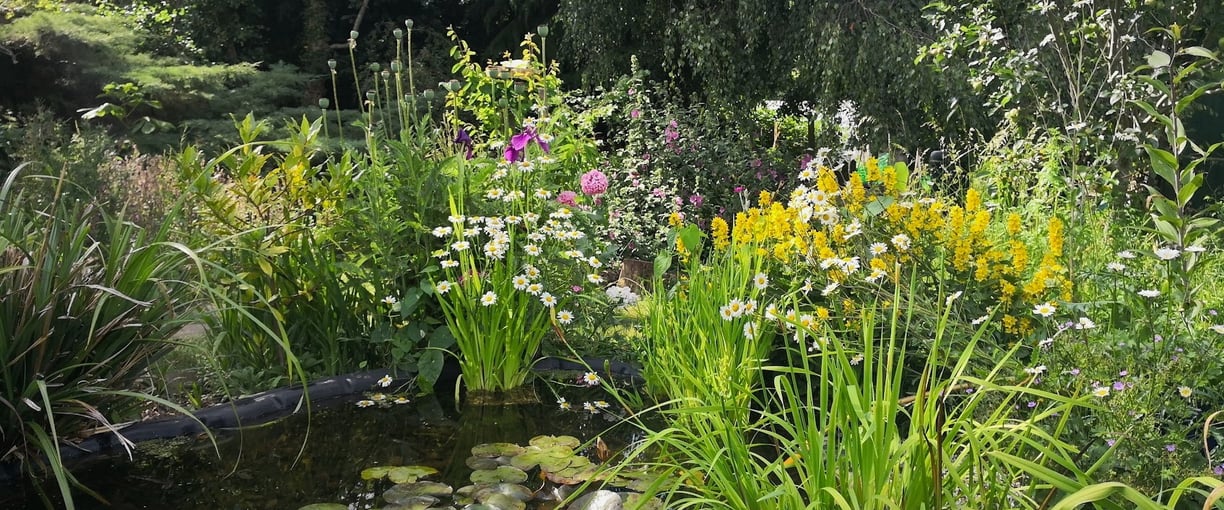

Our garden pond.
We moved to our home in 2011 with the aim of turning the garden into a wildlife friendly haven. The purpose of this series of blogs is to show some of the work we have done to achieve this and hopefully give you some ideas for your own garden. This first blog is an introduction to our garden, it's location and some of the challenges we faced in making the change from a rather boring (at least to us) garden into something that really encourages and supports a growing and diverse wildlife population.
We live in the Stour River Valley on the border between Suffolk and Essex, just outside a small historic market town which dates back to Roman times (possibly earlier). We moved here while we were both still working, the criteria for choosing the house was to find somewhere we could afford, would be happy to spend the rest of our days, that was a sensible size and (most importantly) had a good sized garden - it took a couple of years but we found what we were looking for.
The plot is approximately 20m (65ft) x 75m (245ft). The front garden, which faces slightly East of due South, is basically glacial clay overlying chalk. The rear garden runs slightly West of due North down to the Stour flood plain, the soil is mainly alluvial clay. The last 8m (26ft) or so is only a few feet above the river level so when the river is running high / flooding we very occasionally get ground water flooding there.
Picture: Ramp from our patio down to the rear garden. Added Summer 2023
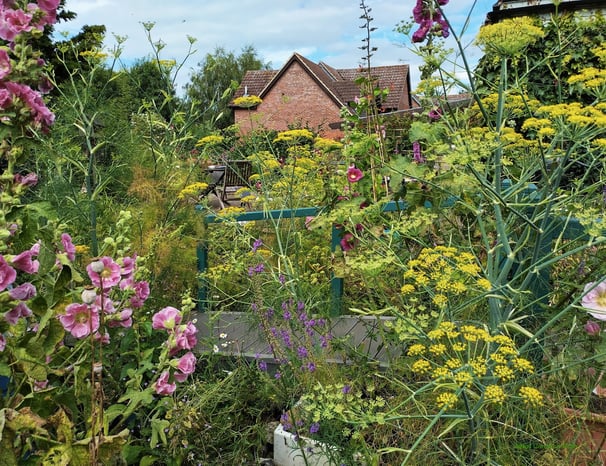


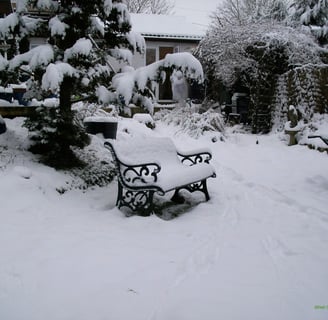
Climate.
We live in one of the driest parts of the UK with an annual rain fall of 630mm (Roughly 25")* although in recent years the rain patterns have changed somewhat with heavy precipitation events becoming more frequent (Notably in October 2023 when storm 'Babette' delivered 2 months worth of rain in a 24 hour period). We are also getting about 20mm (0.75")* more rain per year compared with the 1890s.
The annual average temperature for the last 10 years is 11C (51.8F)*, I did a comparison check against the period 1885 - 1894 using Met Office data and the annual average temperature was 8.66C (47.58F)* - The climate is changing.
Hidden inside these figure is the temperature and rainfall extremes that plants and wildlife need to be able to cope with. 2022 was particularly notable with our own weather station recording temperatures of 41C (105.8F) at the upper end and -11C and at the lower end (12.2F). In the same year we recorded effectively no rain for all of June and July and very little in May and August, the rainfall for the entire year was only 503mm (19.8")*.
*Met Office Data obtained at https://www.metoffice.gov.uk/research/climate/maps-and-data/location-specific-long-term-averages/u122q6drq
Picture: Snow in our garden January 2013
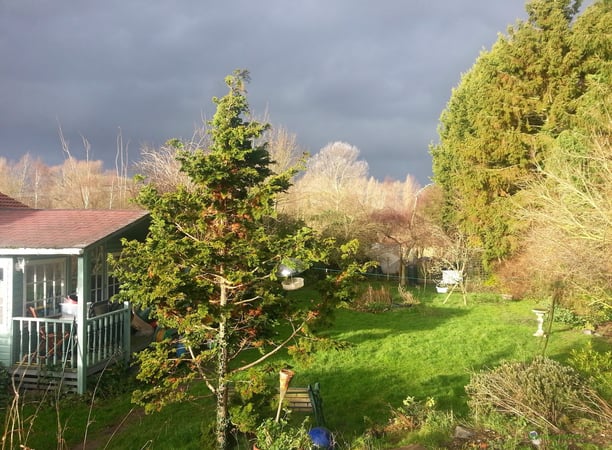

Challenges
Access to the rear garden is through a rather narrow side gate (it's barely wide enough to get a wheel barrow through). This means that getting larger items in can be a bit of a challenge to say the least. Added to that the ground drops away from the back of the house, there are steps to get down to the garden but it meant nothing could be simply wheeled in.
The front garden, which faces South gets baked in the summer and is a real frost pocket in the Winter, so anything we plant there needs to be pretty hardy to survive. The soil is sticky clay which sets like a rock when it's hot and dry.
When we moved in there were dozens of fir trees in the garden next to us to the East (we found out that they were Christmas trees that had been planted and left to get on with it), In addition on our side of the fence there were about half a dozen 10m plus tall cypress / fir trees running along the fence. Combined these effectively shaded the garden for a large part of the day. At the bottom of the garden there was a double hedge of leylandii which had been allowed to grow to the point where they were also blocking light coming into the garden (those were removed pretty quickly !).
Photo: Rear Garden January 2013
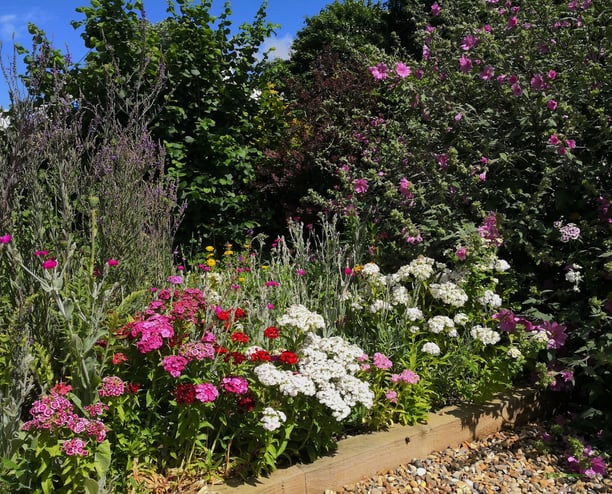

As we were both working when we moved here and the house needed work doing on it (not least insulation) progress in developing the garden as a wildlife friendly environment was relatively slow in the first years. It was the lockdowns of the Covid epidemic in 2020 and 2021 that really gave us the time to really get things moving.
We knew it was going to be a long term project but we are really starting to see the results.
In the second blog of this series I will take a look at what we have changed in the garden including both landscaping and planting, what we have done to improve the soil and the ways we are building in features to encourage wildlife.
I'll also discuss some of the changes we were forced to make (including a failed cess pit!) and how they made us re-evaluate what we intended to do with the garden.
Photo: Front Garden June 2022
